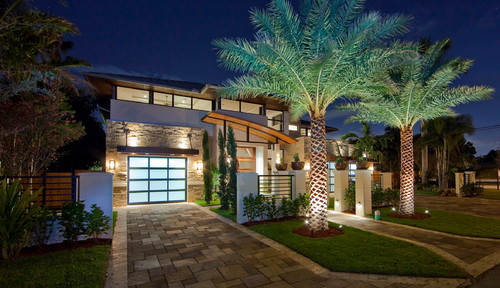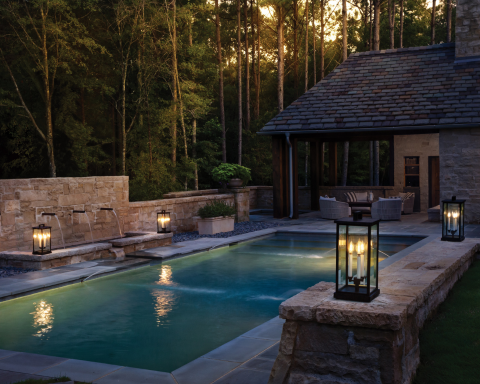Free Ground Shipping on Orders Over $49 Details & Exclusions Excludes Curb Side Delivery (LTL). Lower 48 United States Only.
Oct 26, 2014
Things to Consider Before Buying Flood Lights
Outdoor flood lights, also known as security lights, are a practical choice for homeowners as they are able to produce bright light that extends over a wide space without having to use numerous light bulbs. Installing flood lights is an easy and affordable way to deter intruders as well as wild animals from your home.
When buying this type of outdoor lighting, you will need to consider the main purpose for doing so. Once you have determined your objective, you can then weigh your flood light options in terms of type of finish and whether to purchase flood lights with motion sensor or dusk to dawn features.
Types of Finish
There are many different options in terms of finish, including copper, stainless steel, and colored lacquer on top of aluminum. The safest option is a finish that matches the color or the style of your home.
Motion Sensors
Motion sensor flood lights provide a great safety feature while at the same time preventing any wasted energy in case you forget to turn the light off. These lights have infrared sensors that detect heat waves when someone or something within up to 75 feet is moving. Depending on the sensor, the flood light will remain active from 1 to 10 minutes, then will automatically shut off if there is no further movement detected.
Dusk to Dawn Flood Lights
If your primary concern is security, dusk to dawn flood lights are your best option. These lights turn on automatically at sunset and shut off when the sun rises in the morning. Although this feature saves on energy and adds another layer of protection to your home, it will be best to ask your neighbors if an all-night light will not disturb them in any way.
Types of Light Bulbs
There are many different outdoor flood light options available, and each one has its own pros and cons. Examine each and decide which one will work best for you.
Halogen
Halogen bulbs produce strong, steady beam of white light whose intensity is higher compared to other bulbs of the same wattage. These bulbs also have a longer life span, lasting up to 2,000 hours. The drawback – they have a higher price range and can become extremely hot when in use. If you are buying halogens, make sure you position them out of reach of small children to avoid them from getting hurt.
Sodium Vapor
Sodium vapor flood lights are more energy efficient than halogens. They are also less expensive to maintain. However, these bulbs take longer to achieve full strength than their counterparts, so they are not ideal for fixtures intended to provide security, such as motion sensor lights. Also, the light emitted from sodium vapor bulbs has a yellowish hue.
High Intensity Discharge (HID)
HID bulbs have the longest lasting span and are among the most energy efficient flood lighting options. They produce extremely efficient beam of light that involves relatively fewer replacements. However, similar to sodium vapor flood lights, HID bulbs take longer to reach full power, as much as several minutes after they are switched on.
Incandescent
Incandescent bulbs come in a variety of intensity, shapes, and sizes. The brightness of incandescent light depends on its wattage, so if you are planning to illuminate a large area, you will need to invest in bulbs with higher watt output. Incandescent bulbs may have relatively lower purchasing cost, but they are the least energy efficient bulbs on the market. Also, they have a much shorter lifespan compared to other bulbs.
Fluorescent
Fluorescent bulbs typically contain mercury and argon vapor, so they are seen as potential environmental hazards and many state governments have adopted measures to ensure the proper disposal of these bulbs. Another downside to these bulbs is that they cost significantly higher than incandescent bulbs although they are actually more energy efficient, lasting up to 10 times longer. They are also cheaper than halogen and HID bulbs.
LED
Light emitting diode or LED bulbs cost higher but are much more energy efficient than fluorescent bulbs and can last for up to 50,000 hours, roughly 46 years, if used three hours per day. They instantly produce maximum brightness, without delay once the switch is turned on or a sensor is triggered.





